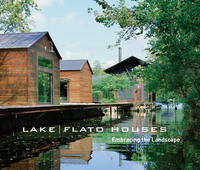
Improbable Metropolis
Houston's Architectural and Urban History
2021 Good Brick Award Winner from Preservation Houston
2020 Ron Tyler Award for Best Illustrated Book on Texas History and Culture from Texas State Historical Association
2021 Summerlee Book Prize (Nonfiction), Center for History and Culture of Southeast Texas and the Upper Gulf Coast at Lamar University
2022 San Antonio Conservation Society Publication Award, San Antonio Conservation Society (SACS)
2022 Julia Ideson Award, Friends of the Texas Room, associated with the Houston Public Library
Beautifully illustrated, Improbable Metropolis is one of the few books to use architecture and urban planning to explain the growth of a major world city, and the only one of its kind on Houston or any other city in Texas.
Improbable Metropolis uses the built environment as a guide to explore the remarkable evolution that Houston has undergone from 1836 to the present. Houston’s architecture, an indicator of its culture and prosperity, has been inconsistent, often predictable, sometimes bizarre, and occasionally extraordinary. Industries from cotton, lumber, sugar, and rail and water transportation, to petroleum, healthcare, biomedical research, and aerospace have each in turn brought profit and attention to Houston. Each created an associated building boom, expanding the city’s architectural sophistication, its footprint, and its cultural breadth. Providing a template for architectural investigations of other American cities, Improbable Metropolis is an important addition to the literature on Texas history.
Bradley conveys [the story of Houston through its buildings and places] in an even and accessible writing style...Improbable Metropolis is a visual treat...the book object would hold its own on any Houstonian’s coffee table.
Throughout Improbable Metropolis, Bradley intertwines Houston’s two dominant and diverging narratives of southern gentility and aggressive economic policies to reveal an often contradictory and yet incredible architectural history that challenges our assumptions about the generative principles of a metropolis.
[Improbable Metropolis] is big, beautiful and comprehensive...starting with the startling book jacket, which shows the downtown skyline from an unexpected angle at night, it is a feast for the eyes...I cannot imagine how much labor went into this magnificent book.
Bradley has spent a lifetime dedicated to architecture, planning, and historic preservation in Houston and her encyclopedic knowledge of the city makes this ambitious work possible. The text is richly accompanied by a wealth of color maps and photographs that increase the depth of documentation...Improbable Metropolis provides further argument that Houston should not be treated as a regional subject, but one that reflects the central importance of private capital, rather than public planning, in shaping the modern American city.
Although Houston has been the fourth-largest city in the United States since 1969, it does not receive the scholarly attention from historians that its size deserves; Bradley’s handsome volume helps rectify this neglect...Bradley’s deep familiarity with her subject will enthrall lay readers and will inspire specialists to enrich Houston’s story by exploring numerous topics further.
In this wonderful book, Barrie Scardino Bradley documents unexpected abundance and beauty in the evolution of Houston’s architecture, as the city’s built environment reflects and shapes its economic, social, and political history. In rich photographic detail, informed by an architect’s expert eye, we watch Houston advance from 1836 to 2017, with no zoning to guide development and no mountains or lakes to interrupt the sprawl, its growth shaped almost exclusively by real-estate developers rather than planners or government officials. It’s a story that is at once inspiring and disconcerting as we consider the challenges that lie ahead.
From frontier commercial buildings to postmodern houses, Improbable Metropolis lays out the unique architectural history of Houston, the ‘un-zoned’ city. Bradley makes a compelling case that one of the most defining elements of Houston’s development—its drive for growth—has been translated by generations of architects into the city’s buildings. Capturing the angles and stories of Houston’s buildings with both narrative and rich images, Bradley also shows with every page the pressing need to preserve the city’s past and even its present as it changes by the day.
As a transplant to Houston from Los Angeles ten years ago, I could have used Barrie Scardino Bradley’s Improbable Metropolis. There was a great architecture guidebook, and several books on the history of Houston, but few books that attempted to delve into the culture of this complex city. What I appreciate most about this book is the way the author weaves the evolution of Houston’s urban personality into the chronology of its development. For someone trying to simultaneously grasp Houston’s history and its ethos, this book fills in the gaps.
Improbable Metropolis explores key episodes in Houston’s unfinished journey from an opportunistic real estate venture on the Gulf Coast to a vibrant and fecund city that continues to attract immigrants from all over the world. Barrie Scardino Bradley joins in the ongoing effort to document and understand Houston’s development and its place in the history of architecture and urbanism.
Introduction
Chapter 1. Bayou City, 1830–1865
Chapter 2. Magnolia City, 1866–1899
Chapter 3. Progressive Houston, 1900–1919
Chapter 4. Energy Capital of the World, 1920–1939
Chapter 5. Golden Buckle of the Sunbelt, 1940–1959
Chapter 6. Space City, 1960–1979
Chapter 7. H-Town, 1980–1999
Chapter 8. Petro Metro, 2000–2017
Epilogue
Notes
Bibliography
Index











